I cannot suggest to the earnest rose lover any finer summer pilgrimage than one to the Arnold Arboretum.
—J. Horace McFarland, editor and publisher of the American Rose Annual (1917a)
Hundreds of new plant cultivars, complete with gorgeous catalogue pictures and euphoric blurbs, are introduced each year. Few will still be around in a hundred years, and unfortunately sometimes the most innovative and influential are the first to fade away. Jackson Thornton Dawson, whose hybrids revolutionized rose culture more than any since the first repeat-blooming China roses, remembered the quick rise and precipitous fall of his roses. Writing in Country Life in America in 1911, the Arnold Arboretum’s first superintendent detailed his once successful climbing roses before closing with a comment on ‘Arnold’, his breakthrough hybrid whose subsequent decline and near extinction remains one of the unresolved puzzles of modern roses. “A rich crimson, darker even than ‘Général Jacqueminot’, very fragrant … I hoped it would lay the foundation for a race of garden roses which would be perfectly hardy,” Dawson wrote of his cross between the velvety red Hybrid Perpetual ‘Général Jacqueminot’ and the rugged Rosa rugosa. “But these hopes were dashed.”
For decades, Dawson dreamed that his cold-hardy shrub rose and its offspring would end the plagues that still tarnish rose gardens 130 years later: black spot, powdery mildew, and insect infestation. He imagined his new hybrid line would also make rose gardening more democratic by eliminating the production cost—and cost to the consumer—of budding to rootstock (Dawson 1902; Dawson 1911). In Dawson’s only other account, written for Liberty Hyde Bailey’s Cyclopedia of American Horticulture in 1902, he adds that someone stole his other valuable Rosa rugosa seedling. But his two brief essays still give little hint of the romance of mistaken names, cut-throat competition, and record keeping failures that took Dawson’s hybrid out of consideration for an honor that might have made it a staple of botanical gardens: recognition as the rose that ushered in what British horticulturist Graham Stuart Thomas called “the day of the flowering shrub” (Thomas 1994).
Origin of a Hybrid Species
“It would be very difficult to give a longer recital of merits,” wrote Thomas of Rosa rugosa, the parent species Dawson selected for his new class, “It flowers from the end of May onwards into autumn, bears heps [hips], and gives autumn color. It has a variety of colors, and an excellent fragrance … I have seen no disease on it or on its varieties, and pests do not make any impression on it.”
In addition to the traits Thomas listed, Dawson selected Rosa rugosa, native to eastern Asia, because it withstood New England winters better than any other rose species. But its brutal gauntlet of prickles, stout upright stems, and shapeless flowers made it unpopular when first released into Europe in 1796. Rosa rugosa found even fewer admirers in America. It appeared in commerce in 1870 but didn’t catch on for 40 years. It did find one influential friend on arrival, though—Dawson’s mentor, the historian and horticulturist Francis Parkman, Jr., who probably obtained it in 1861 in the first cargo of Asian flora sent directly to New England (Parkman 1866; Spongberg 1993).
When Parkman became the first horticulture professor in America in 1871 at Harvard’s Bussey Institution, he hired Dawson as propagator. “It was thus that I became interested in the wild roses of Japan and started to hybridize them,” Dawson later wrote of his two years at the Bussey (Archives of the Arnold Arboretum). He left to become the first superintendent and propagator at the fledgling Arnold Arboretum in 1873. The director, Charles Sprague Sargent, paired Dawson’s “natural genius” for spotting the “affinities” between species with an ambitious program of Rosa accessions.
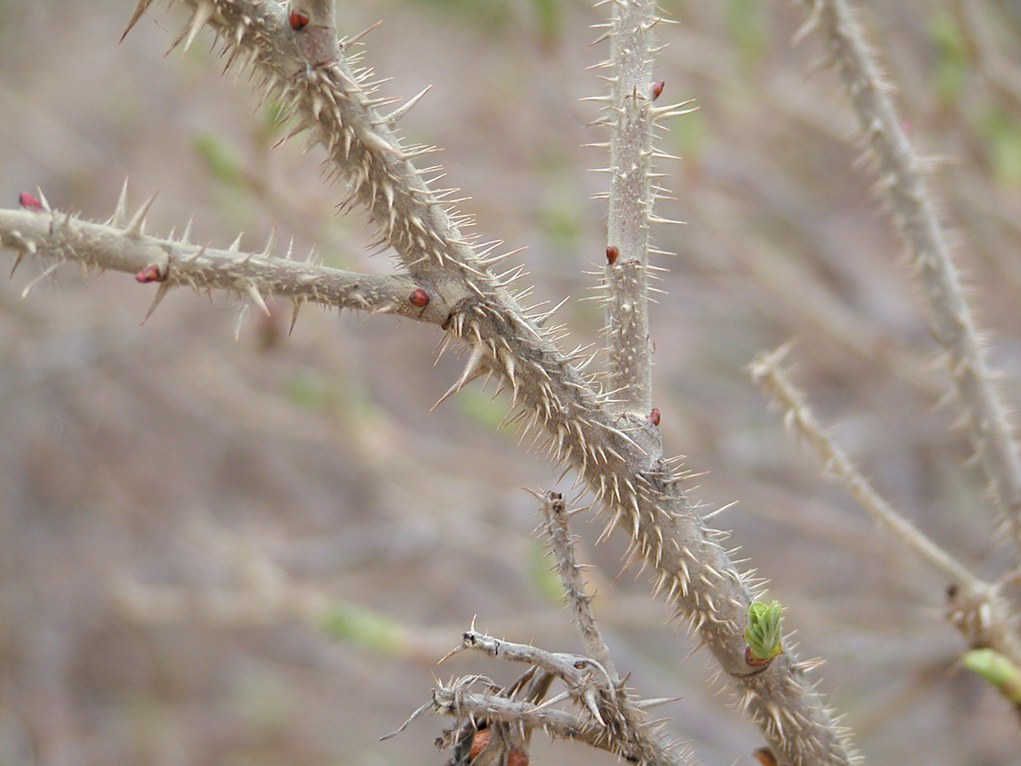


The mix of innovation and raw material paid off. By the mid 1880s, Dawson had done the impossible, twice. He wed the diploid Rosa multiflora to the tetraploid ‘Général Jacqueminot’ and raised the first American rambler, ‘Dawson’. Another early pairing, between the diploid Rosa rugosa and ‘Général Jacqueminot’, would be the first Hybrid Rugosa in America and arguably the type for the class. The achievement is even more noteworthy since both hybrids set seeds—fertile offspring from crosses between diploid and tetraploid plants are a rare exception to the rules of genetics (Rowley 1960).
The Invisible Hand
“He was so modest,” recalled Dawson’s granddaughter Betty Blossom Johnston in a Horticulture magazine profile in 1957. “It wasn’t until decades later I was to learn what an important part he himself had played in raising these plants.” Dawson’s rose breeding competitors were not so demure. When The American Garden announced the introduction of the purported first Hybrid Rugosa, raised in France, into commerce in February 1888, ambitious plantsmen saturated the media. Elbert Carman, a plant breeder whose hybrids of Rosa rugosa and R. × harisonii had yet to flower, launched the loudest self-promotion campaign (Carman 1889). Others also began announcing their rugosa hybrids, whether these had germinated or not.
While no one in America seems to have seen the French hybrid that started the furor, Scottish-American plantsman William Falconer had seen a Hybrid Rugosa in bloom. In the same issue of The American Garden that established ‘Mme. Georges Bruant’ as the type specimen of Rosa rugosa hybrids, Falconer praised the flowers of Dawson’s cross of Rosa rugosa and ‘Général Jacqueminot’ as “the deepest and brightest red” (Falconer 1888). Though Dawson himself said nothing in print until 1902, his crimson-flowered shrub rose appeared again in 1892, when it won a first class certificate of merit from the Massachusetts Horticultural Society. The next year Sargent christened the hybrid Rosa × arnoldiana ‘Arnold’ before it won a second award from the society, a silver medal—the highest honor bestowed. (The hybrid epithet × arnoldiana is no longer accepted so the cultivar is now listed as Rosa ‘Arnold’.)


“When the sun shines on the Arnold rose the eyes are quite dazzled,” Dawson wrote in 1911. The nearly perpetual bloomer formed a bush about four feet high with dark green, crinkled foliage similar to that of its wild parent and large single to semi-double flowers that faded from dark crimson to scarlet (Dawson 1902; Dawson 1911). Some admirers likened its festive green and red tones to yuletide holidays. But when Dawson released ‘Arnold’ commercially in 1893—a year, he later wrote, that revolutionized American roses—the American market rejected it, as it continued to reject the species parent for its rugged appearance. Even worse, ‘Arnold’, often referred to in print as “Dawson’s Hybrid Rugosa,” ‘Arnoldiana’, or “the Arnold Rose,” turned out to be harder to hybridize than Dawson thought. It refused to set mature hips when hand fertilized with pollen from other roses. Dawson moved on after five years of failure.
‘Arnold’ entered the Arnold Arboretum’s accession files in 1898. For almost 20 years afterward, virtually no one mentioned it. When Walter Van Fleet, America’s most acclaimed rose breeder, wrote the early history of Rosa rugosa hybridization in 1916, he listed his mentor, Elbert Carman, as the pioneer. Dawson came in as an also-ran who had made crosses “as early as 1892.” No rebuttal to Carman or Van Fleet survives. But Dawson saved what may be his most disparaging comments for Carman’s R. rugosa × R. harisonii hybrids, calling them “the biggest lot of mongrels one ever saw, in both foliage and flower” (Dawson 1902).
A Rose by Another Name
Sargent shipped a number of Dawson’s rose hybrids to correspondents around the world up to a decade before Dawson released them commercially. Thanks, perhaps, to Sargent’s open sharing policy, Falconer’s notes on ‘Arnold’ exist while any Arboretum records from the same time have disappeared. But not every recipient credited Dawson for his work. “Few people realize just what a pioneer he was,” wrote Charles Quest-Ritson in Climbing Roses of the World in 2004. “ Many of his hybrids were introduced by nurseries without any acknowledgement of his part in their raising.”
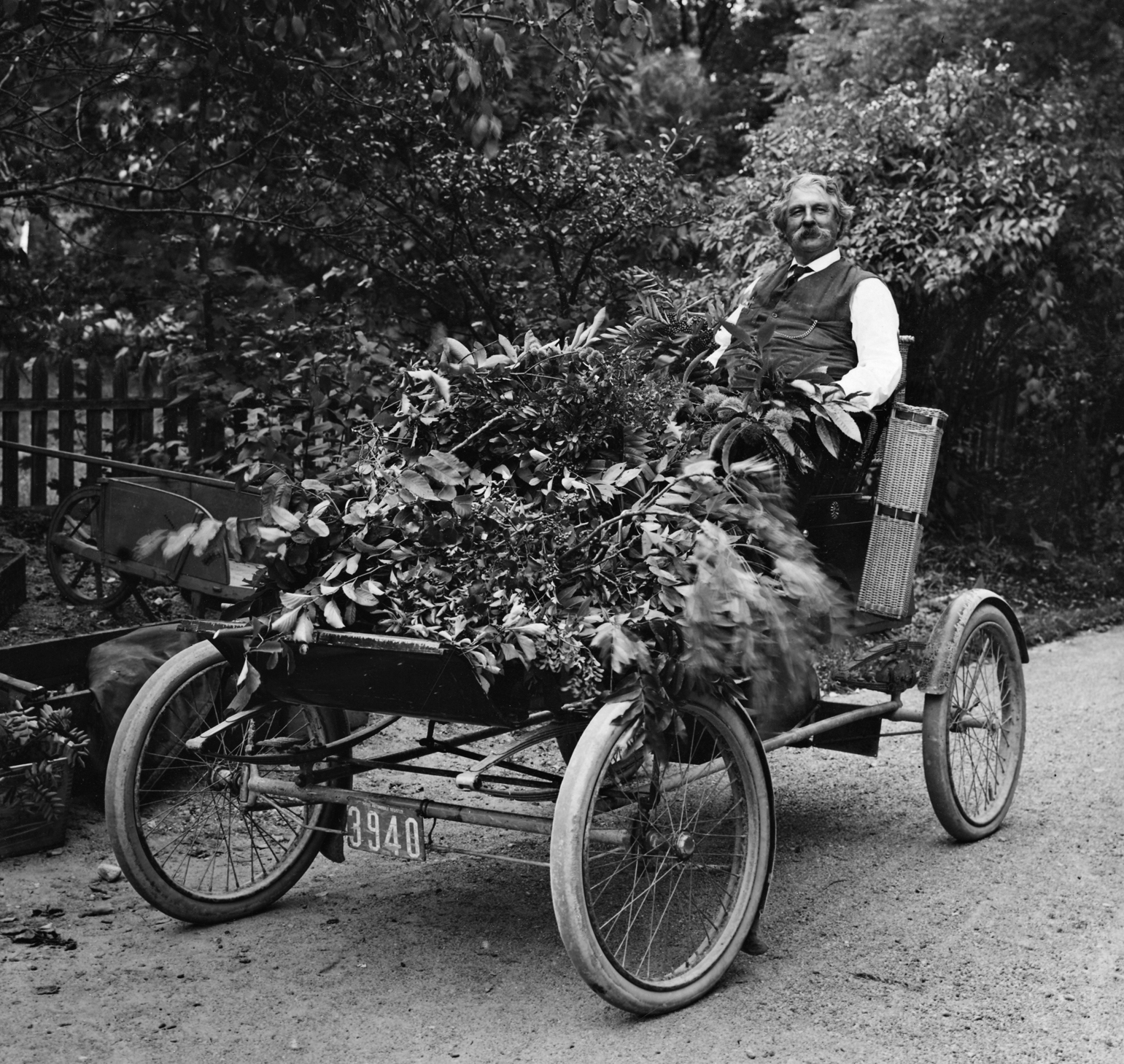
Unlike other nurserymen who borrowed from Dawson, the English hybridizer George Paul came clean after 22 years. Hayward Darlington, secretary of the Royal National Rose Society, put the confession into print in a cultivar description published in the Royal National Rose Annual of 1915:
‘America’ (Paul & Son, 1895 [introducer and introduction date]). The flowers are large and of a crimson lake color. The shape is that sometimes called the American shape, which differs slightly from the true Japanese. It has large ovate fruit covered with long spines. Mr. G. L. Paul tells me that this rose was sent to his firm in the year 1892 by Prof. Sargent of the Hartford Botanic Gardens, U.S.A.
Darlington corrected “Hartford Botanic Gardens” to “The Arnold Arboretum” in 1917 and Jules Gravereaux, the director of the Roseraie de L’Haÿ, an extensive rose garden south of Paris, recorded the actual introduction date as 1893. While ‘America’ and ‘Arnold’ have never been formally listed as the same rose, available evidence suggests synonymy. That both Paul and Gravereaux—two of the most diligent collectors of Hybrid Rugosas, close correspondents of Sargent, and collectors of Dawson roses—never listed the name ‘Arnold’ in their collections is itself a strong hint that they had it under the name ‘America’
Other arguments for synonymy provide a window into Dawson and Sargent’s standard practices: Sargent usually sent Old World colleagues the unnamed hybrids that Dawson would go on to name and release; Dawson only mentioned producing two Hybrid Rugosas of merit and the other, which was stolen, bore mauve, fully double flowers; Dawson only saved his best hybrids, about 1 out of every 10,000 seedlings (Blossom 1957)—the likelihood he saved two nearly identical roses, which would both go on to be ranked in separate countries as the best of their color and habit, is low.
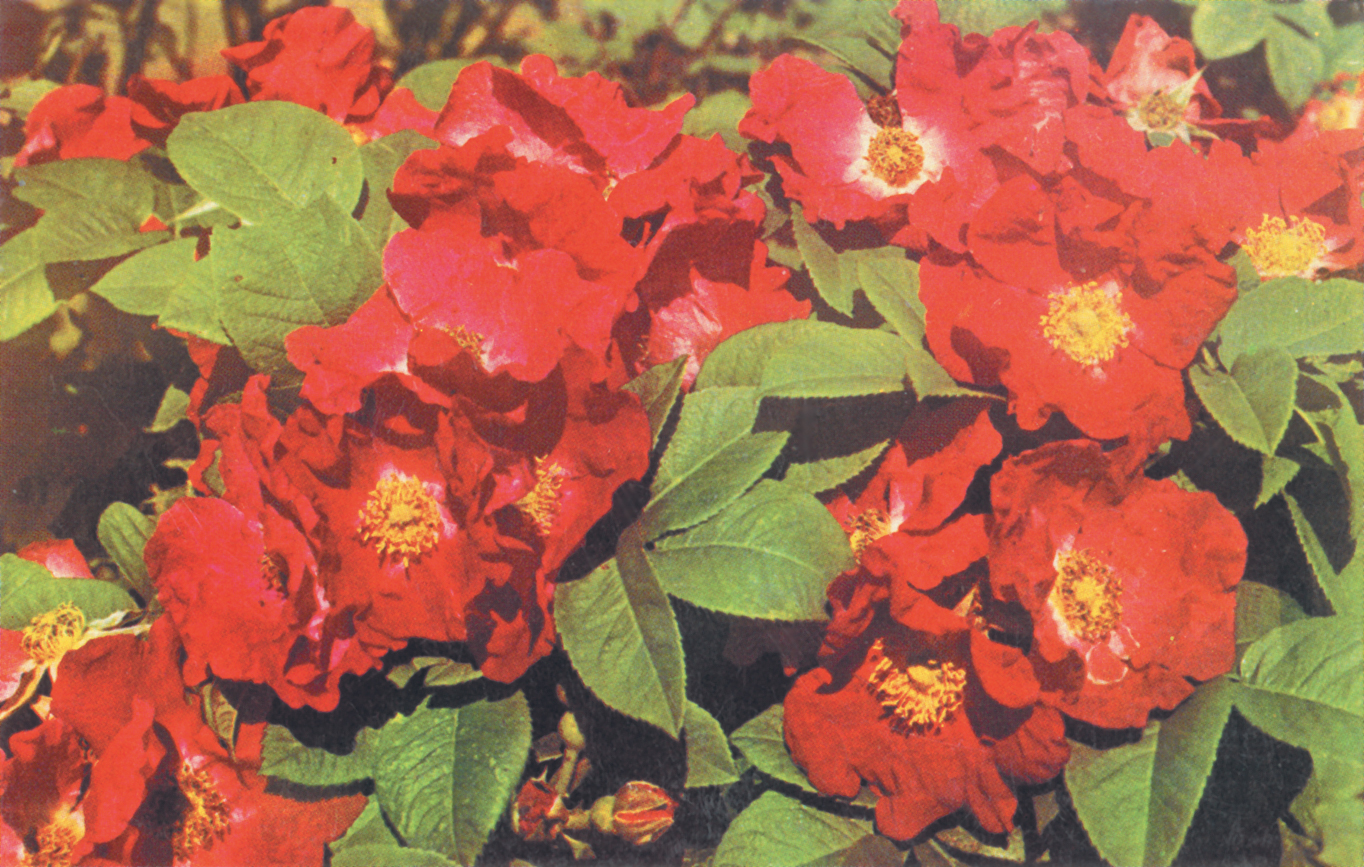

‘America’ left such a mark on the rose culture of Europe that the Société Nationale d’Horticulture de France included it among the most beautiful roses of the era in Plus belles roses au début du XXe siècle in 1912. Darlington likewise listed it among the best Hybrid Rugosas in England. Unless new documents or verified specimens of ‘Arnold’ and ‘America’ emerge to unlink them, rosarians should cautiously consider them to be the same.
A Last Huzzah
By 1914, Americans had caught up with Europe’s love of Rosa rugosa. Three years after writing that ‘Arnold’ had dashed his hopes, Dawson re-released it. Before he died in 1916, Dawson saw ‘Arnold’ win more praise than it had in the previous 30 years. J. Horace McFarland, America’s most influential rosarian, wrote that ‘Arnold’ deserved a place in every landscape (McFarland 1916).
But an artifact of failure remained. ‘Arnold’ had so thoroughly disappeared after 1893 that fans mistook it for a new hybrid, considering it to be Dawson’s last, crowning achievement (McFarland 1917b). Alfred Rehder, the Arnold Arboretum taxonomist whose revision of the genus Rosa laid the groundwork for later rosarians, gave authority to the error when he published a detailed Latin description of ‘Arnold’ in the Arboretum’s Bulletin of Popular Information (Rehder 1922). Sargent never corrected the false introduction date, just as he never put a word into print about ‘Arnold’ and ‘America’. Richard A. Howard, director of the Arboretum from 1954 to 1977, later popularized the groundless theory that Dawson had not bred ‘Arnold’ at all but selected it from chance seedlings.
Rebooting the ‘Arnold’ Legacy
In 1919, when the Arboretum had earned recognition as one of the world’s finest rose gardens, Sargent would still describe ‘Arnold’ as perhaps the most eye-catching plant in the Arboretum’s collection. But Dawson’s Rosa rugosa × ‘Général Jacqueminot’ hybrid eventually went out of favor under every name. Without a proper assessment of its historic value or ongoing promotion of its merits, botanic gardens and rose enthusiasts denied ‘Arnold’ garden space.
In 2012, the Arboretum renovated its rose collection in conjunction with the bed redesign in the Bradley Rosaceous Collection. In the spirit of Dawson, who blended wild species with the most acclaimed contemporary hybrids of his era, specimens of rose species collected around the world such as Rosa nitidula, R. gymnocarpa, and R. rugosa are bedded with award-winning modern cultivars. For over 100 years, ‘Arnold’ specimens at the Arboretum outlived other cultivars and species, surviving for as long as 60 years in shade and cold through the Arboretum’s most trying times. But, in a final twist to the ‘Arnold’ legacy, the last of its original lineage died before the collection could be reinvigorated. Today, the Arboretum is seeking sources of healthy, correctly identified specimens of ‘Arnold’, whether under that name or its other epithets, as well as other Dawson roses.
Comprehensive List of Named Roses Hybridized by Jackson Thornton Dawson
Dawson produced approximately 10,000 roses for each he saved. He named and released even fewer (Blossom 1957). Many of the following cultivars are lost, though they may still exist under alternate identities. The Arboretum is sourcing many of these, and growers or those with knowledge of true pedigreed lineages of the following are encouraged to contact the Curation Department.
‘Apple Blossom’, 1890. A Rosa multiflora hybrid with distinctive pink, ruffled petals that fade to white. It may be the rose that Luther Burbank’s wife patented in 1933 under the same name.
Rosa × arnoldiana Sargent ex Rehder ‘Arnold’, 1893. Bred sometime between 1871 and the mid 1880s. By 1888 it was known as the best red form of Rosa rugosa (Falconer 1888). George Paul apparently gave it the synonym ‘America’ to refer both to the 400th anniversary of Christopher Columbus’s arrival in the new world and the Arnold Arboretum’s mission to create distinctly American roses.
‘Betty Blossom’, 1900. Named for Dawson’s granddaughter. British taxonomist Gordon Rowley recognized ‘Betty Blossom’ as the first cross of Rosa wichurana and a Hybrid Tea (Rowley 1957).
‘Cynthia E. Hollis’. A Rosa multiflora hybrid with light pink, loosely double flowers



Rosa × dawsoniana Gravereaux ex Rehder ‘Dawson’, 1888. The first American Rosa multiflora hybrid and one of the first R. multiflora hybrids in the world. R. × dawsoniana is sometimes considered the rose that brought ramblers into fashion (Archives 1911). J. Horace McFarland praised “its rose-pink delicacy, [which] has not been excelled” (McFarland 1923), and taxonomist Gordon Rowley recognized it as the first cross between a Hybrid Perpetual and any form of R. multiflora (Rowley 1957).
‘Daybreak’, 1909. A single petaled, orange-pink Rosa multiflora hybrid named for its resemblance to the ‘Daybreak’ carnation. Used as a groundcover.
‘Farquhar’, 1903. Rosa wichurana × ‘Crimson Rambler’. Double pink flowers resemble ‘Melba’ and ‘Marquis’ carnations. In 1901, the R. & J. Farquhar Co. nursery built up an inventory of the esteemed, but not yet commercially released, ‘Farquhar’ to flood the market, but they got scooped by another company. According to a Dawson obituary, ‘Farquhar’ is the uncredited parent of Jackson and Perkins’s very similar ‘Dorothy Perkins’, the most popular rose of the early twentieth century, released in 1901.
‘Ida’, early 1890s. A Rosa multiflora hybrid. Probably a ‘Dawson’ seedling.
*‘Jennie Dawson’, before 1916. Once considered the best white cultivar of Rosa wichurana (Lay 1916).
Rosa × jacksonii Willmott ‘Lady Duncan’, 1897/1900. A Rosa rugosa × R. wichurana cross that J. Horace McFarland considered the first Hybrid Wichurana. Dawson named ‘Lady Duncan’ for the daughter of one of his early patrons. Dawson kept other R. rugosa × R. wichurana seedlings (Horticultural Club 1914), possibly including the rose that became ‘Max Graf’.
‘Little Tot’, before 1900. A Rosa multiflora hybrid also listed as ‘Little Dot.’ Dawson explained that ‘Little Tot’ bloomed so much he could never get enough wood to propagate.
‘Minnie Dawson’, 1896. An attempt to create a more fully double Rosa multiflora flower by backcrossing ‘Dawson’ with the species. Named for Dawson’s wife.
‘Pauline Dawson’, 1916. Named for Dawson’s daughter-in-law, who helped manage the family’s Eastern Nurseries.
*‘Royal Cluster’, 1899. ‘Dawson’ × ‘Hermosa’. A rambler with strongly scented double white flowers. Conard and Jones advertised it as the best white climber available in 1901.
‘Sargent’, 1909/1912. Bred before 1903. Dawson considered ‘Sargent’ his best rose (Dawson 1911). Often listed as a Rosa wichurana × ‘Crimson Rambler’ seedling crossed with the Hybrid Perpetual ‘Baroness Rothschild’, ‘Sargent’ may be more sophisticated, perhaps including R. setigera and ‘Général Jacqueminot’ in its makeup (Horticultural Club 1914).
‘Seashell’, 1916. Said to have had large, pink, semi-double flowers.
*‘White Dawson’, 1899. A sport of ‘Dawson’ discovered in an Ellwanger and Barry nursery.
‘William C. Egan’, 1896/1900. A bone-hardy hybrid of Rosa wichurana and ‘Général Jacqueminot’ that resembles the well-known ‘Souvenir de la Malmaison’. ‘William C. Egan’ was probably the first R. wichurana hybrid, kicking off the line of climbing roses that defined 20th century rose culture. The rose’s namesake was an Illinois plantsman to whom Dawson sent unnamed hybrids to test in the Lake Michigan region.
*‘White Dawson,’ ‘Royal Cluster,’ and ‘Jennie Dawson’ are not recorded in Arnold Arboretum records or the comprehensive helpmefind.com rose database. Stephen Hamblin, the last director of the Harvard Botanic Garden, is the most authoritative source for their provenance. Dawson’s granddaughter Betty Blossom considered Hamblin’s collection of her grandfather’s roses the most complete. She narrates Hamblin’s intimate association with Dawson and his roses as a youth (Blossom 1957). However, Hamblin made errors concerning the Dawson hybrids—like most others, he thought ‘Arnold’ was a 1914 rather than an 1893 introduction. The near absence of records for ‘White Dawson’, ‘Royal Cluster’, and ‘Jennie Dawson’ suggests that other commercially released Dawson roses await rediscovery.
Sidebar | A Red, Red Rose
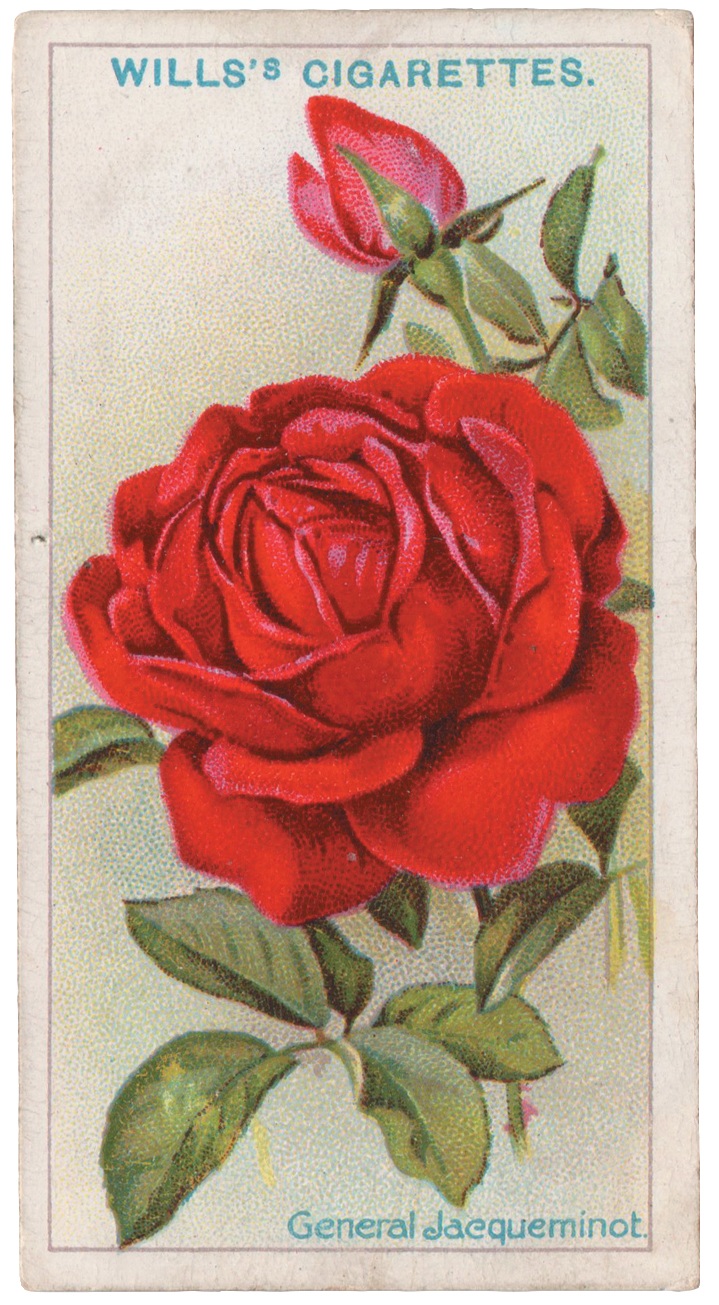


‘Général Jacqueminot’, a Hybrid Perpetual rose introduced from France in 1853, has been widely used in hybridizing. Many modern red roses can trace their color to the rich crimson imparted by “General Jack,” as Americans called it. In addition to its stunning color, ‘Général Jacqueminot’ was known for its rich, sensuous scent. Around 1903, aspiring perfumer François Coty used its fragrance as a basis for his new perfume, La Rose Jacqueminot, whose wild popularity launched the Coty company. Seen here, a cigarette card (front and back) from 1912, part of a set of 50 rose cards, and an advertising poster for the perfume by illustrator Leonetto Capiello.
Sidebar | A Love Story Coded in Rosa Species
Jackson Dawson was the key player in the Arnold Arboretum’s rose breeding program, but Ernest Henry Wilson, the Arboretum’s renowned plant explorer, also has a fascinating connection to roses. Wilson has not always been portrayed as a passionate husband; rosarians Douglas Brenner and Stephen Scanniello sketched him as a Ulyssean adventurer under the spell of his English patron, the heiress Ellen Willmott, willing to leave his wife Helen and newborn daughter Muriel Primrose to travel to the other end of the world for years at a time (Brenner and Scanniello 2009). Letters from Arboretum director Charles Sprague Sargent to Willmott show that she had a unique influence over Wilson. When Sargent failed to persuade Wilson to explore China for the Arboretum, he wrote an uncharacteristically seductive letter to Willmott, hoping she would intervene. She did (Sargent 1906). Her power over Wilson consolidated the Arboretum’s legacy. The three later collaborated on Willmott’s monumental tome, The Genus Rosa.
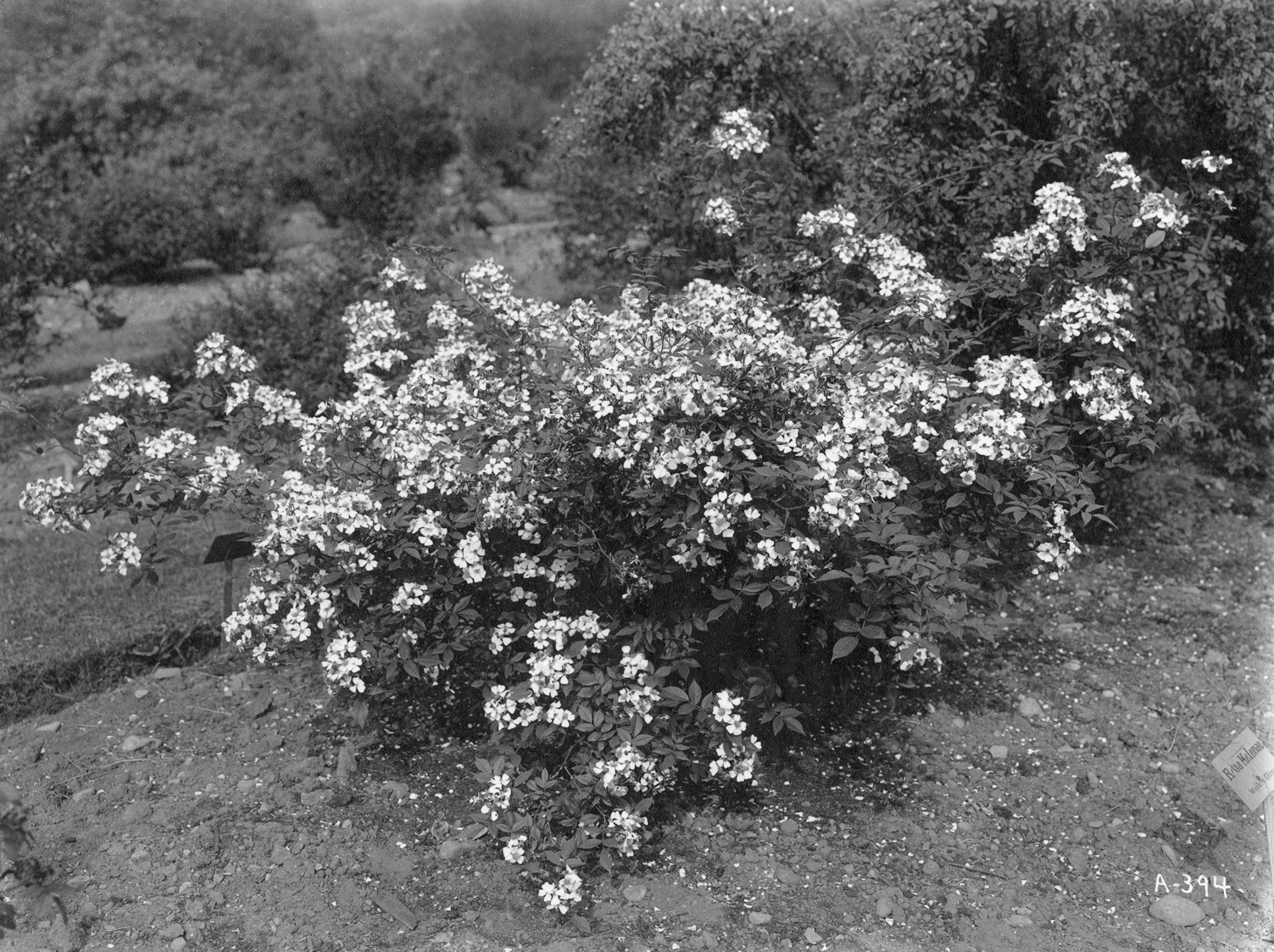

During his time in Asia, Wilson collected as many as 2,000 species of plants previously unknown to the west, including Rosa helenae, or “Helen’s Rose,” and R. murielae, named for his wife and daughter respectively. He named three finds for Willmott, among them a rose, R. willmottiae. Of the three roses, Rosa helenae caught on with gardeners. Where other musk roses fainted, Helen’s Rose endured; Wilson suggested that a new breed of cold hardy Noisette-style roses be bred from it (Wilson 1916b). Canadian hybridizers took him up successfully (Thomas 1994).
In 1914, shortly after helping Willmott finish The Genus Rosa, Wilson returned to Asia, this time to Japan. Helen and Muriel Primrose accompanied him on this and future expeditions. In 1927, after the death of Sargent, Wilson became keeper of the Arnold Arboretum, remaining one of the rose’s most vocal proponents. He and his wife died together in an automobile accident on October 15, 1930.
Over the following 30 years, botanists noted a close alliance between Rosa helenae and R. rubus, another species Wilson collected (Thomas 1994). At Kew, which had received both R. helenae and R. rubus seeds from the Arboretum in a lot labeled “seed No. 431” (Sargent and Wilson 1913–1917), the two species were often confused (Bean 1981). But the accidental pairing of species in “seed No. 431” inspired Wilson’s former Kew colleague Otto Stapf to give R. rubus the synonym R. ernestii, or “Ernest’s Rose,” making R. ernestii and R. helenae a symbol of the marital bliss that their discovery delayed.
Selected References
Adams, D. W. 2004. Restoring American Gardens. Portland: Timber Press.
Allen, C. L. 1891. The Scientific Education of Gardeners. In Transactions of the Massachusetts Horticultural Society.
Archives of the Arnold Arboretum. Newspaper clipping, “Plant wizard Dawson honored.” [circa 1911].
Austin, D. 2009. The Rose. Woodbridge: Garden Art.
Bagatelle-Roseraie. 1913, 1914, 1917. Catalogue de la Roseraie de Bagatelle.
Bailey, L. H. 1894. Annals of Horticulture in North America for the Year 1893. New York: Orange Judd Company.
Bean, W. J. 1981. Trees and Shrubs Hardy in the British Isles, vol. IV. London: J. Murray.
Blossom, B. 1957. My most unforgettable character. Manuscript, Archives, The Arnold Arboretum.
Brenner, D. and S. Scanniello. 2009. A Rose by Any Name. Chapel Hill: Algonquin Books.
Carmen, E. S. 1889. The First Hybrids with Rosa Rugosa. The American Garden. 10(6): 218–219.
Conard & Jones Co. Catalogue. 1901. West-Grove, Pa.
Darlington, H. R. 1915. Rugosa Roses. The Royal National Rose Annual 9: 31–47.
Dawson, J. T. 1902. Some Recent Rose Hybrids. In the Cyclopedia of American Horticulture (5th edition, pp. 1572–1573). New York: Macmillan.
Dawson, J. T. 1911. America’s contribution to rose culture. Country Life in America 20(4): 22–23, 66.
Dingee and Conard Co. Catalogue. 1902. West-Grove, Pennsylvania.
Ellwanger and Barry Catalogue. 1899. Rochester, New York.
Falconer, W. 1888. From Long Island. The American Garden 9(2): 57.
Gravereaux, J. 1899, 1900, 1902 eds. Roseraie de l’Haÿ (Seine) Collection Botanique du Genre Rosa. Paris.
Hamblin, S. F. 1930. Studies in Rose Breeding. American Rose Quarterly 2: 8–10.
Horticultural Club of Boston. 1914. Minutes of the Horticultural Club of Boston, February 14, 1914.
Journal des Roses. 1894. Melun, France: Cochet. 164.
Lay, C. D. 1916. Roses in the Landscape. American Rose Annual 1: 14–18.
Magnard, J-L., et al. 2015. Biosynthesis of monoterpene scent compounds in roses. Science 349 (6243): 81–83
McFarland, J. H. 1916. The Rose Pioneers of America. American Rose Annual 1: 44–47.
McFarland, J. H. 1917a. Roses in the Arnold Arboretum. American Rose Annual 2: 84–88.
McFarland, J. H. 1917b. In Memorium, Jackson Dawson. American Rose Annual 2: 114.
McFarland, J. H. 1918a. Rose Notes, Made in America. American Rose Annual 3: 101.
McFarland, J. H. 1918b. Joining Hands with France in the Arnold Arboretum. American Rose Annual 3: 105–106.
McFarland, J. H. 1923. The Rose in America. London: Macmillan & Co.
Parkman, F. 1866. The Book of Roses. Boston: Tilton.
Paul, G. 1841, 1857, 1864, 1866, 1867, 1879, 1902 eds. Catalogue of roses cultivated for sale. London.
Rehder, A. 1908. Arnold Arboretum Hybrids. Horticulture. December 12, 1908.
Rehder, A. 1922. New Species, Varieties and Combinations (Rosa). Journal of the Arnold Arboretum 3: 11–18
Rowley, G. D. 1957. The Botany of Climbing Roses and the Derivations of Some Garden Climbers. In The Graham Thomas Rose Book (pp. 346–350). Portland, Oregon: Timber Press.
Rowley, G. D. 1960. Triploid garden roses. American Rose Annual 45: 108–113.
Sargent, C. S. 1892, 1895. Garden and Forest vols. 5 and 8.
Sargent, C. S. 1906. Letters to Ellen Willmott. Sargent Letter Books, Vol. 3. Archives, The Arnold Arboretum.
Sargent, C. S. 1919. Rosa Rugosa. Bulletin of Popular Information 5(10): 37–39.
Sargent, C. S. (ed.). 1913–1917. Plantae Wilsonianae. Cambridge, Massachusetts: University Press.
Société nationale d’horticulture de France. 1912. Plus belles roses au début du XXe siècle. Paris: C. Amat.
Society of American Florists. 1892. Proceedings from the Eighth Annual Convention, p. 128. Boston: Daniel Gunn and Co.
Citation: Whitacre, B. 2015. Filing a missing rose claim: Jackson Dawson and the Arnold rose. Arnoldia, 73(1): 17–27.
Spongberg, S. A. 1993. Exploration and Introduction of Ornamental and Landscape Plants from Eastern Asia. In: J. Janick and J. E. Simon (eds.), New crops. Wiley, New York
Thomas, G. S. 1994. The Graham Stuart Thomas Rose Book. Portland, Oregon: Timber Press.
Van Fleet, W. 1916. Possibilities in the Production of American Garden Roses. American Rose Annual 1: 27–36.
Wilson, E. H. 1916a. Jackson T. Dawson: His work and his workshop. Horticulture 23(2): 40–41.
Wilson, E. H. 1916b. Some New Roses Introduced by the Arnold Arboretum During the Past Decade. American Rose Annual 1: 37–41.
Wilson, E. H. 1924. What Roses Does America Need? American Rose Annual 9: 23.
Benjamin Whitacre is a garden writer with a special interest in roses. He spent a year researching the Arnold Arboretum’s rose collection and records.
